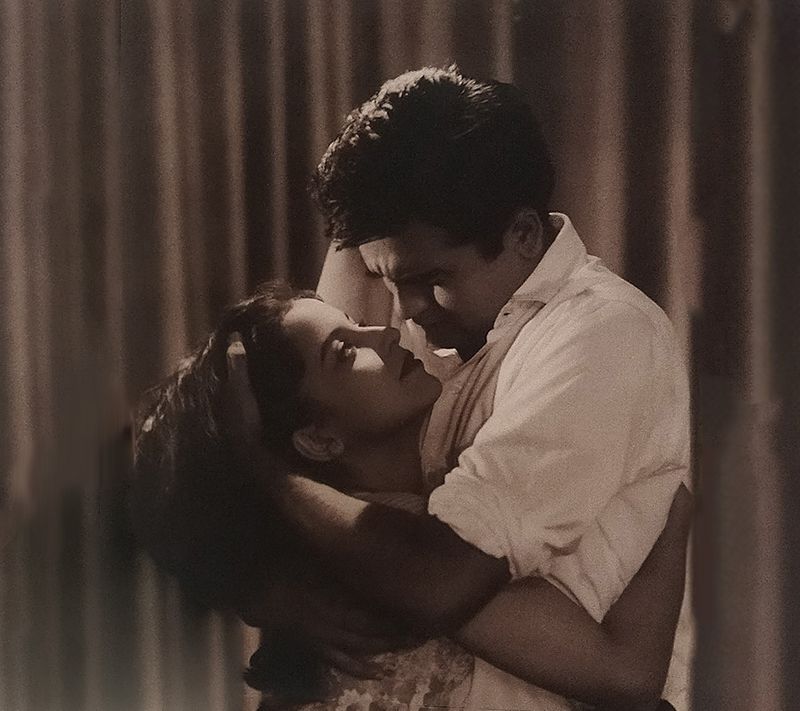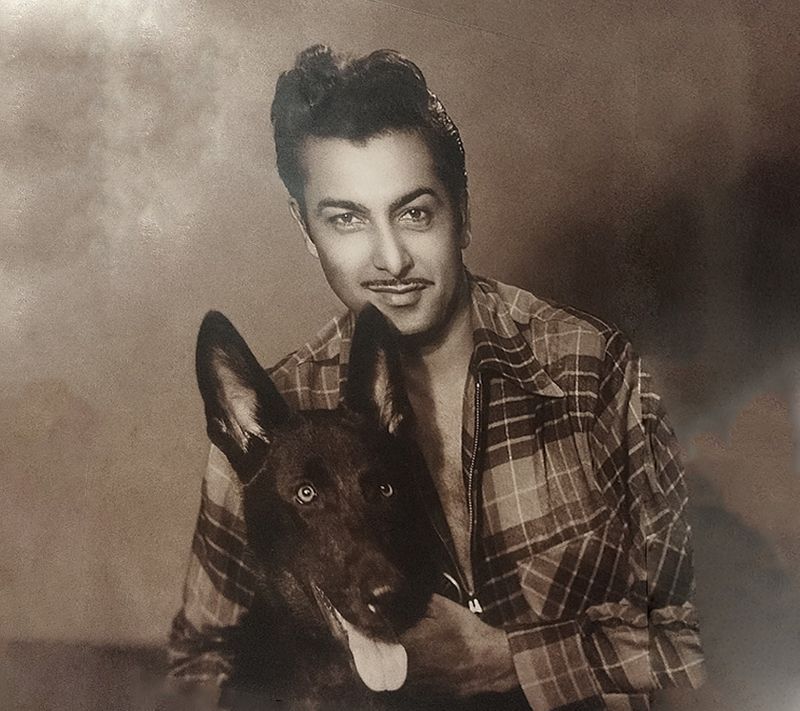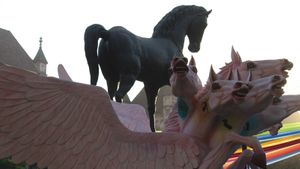Meena Kumari, known for her effervescent onscreen avatar in her early films before graduating to the more reflective roles, was photographed quite often by JH Thakkar, the famous lensman who captured stars during Hindi cinema’s golden era. But, of all the promotional pictures or portraits, if there is one image that captures the viewer’s fancy, it would be of her posing near a water tap with one hand clutching the tap. She is wrapped in a wet garment, tantalisingly signifying as if the actor was taking a bath like how village belles do. Her shoulders are bare and her hair is loosely coiffed with soft curls touching her decolletage.
For an actor who didn’t exactly project a bold image on screen, this shot is gloriously sensual. Kumari looked confident and seemed to have enjoyed the shoot.
Exhibiting Hindi cinema’s golden age

It is this candid dalliance with the viewfinder that Thakkar’s extracted from his subjects. They felt comfortable with him behind the lens knowing full well how his creative mastery and photographic vision would save a rare moment for posterity.
As we took a walk viewing more such magical images at Sitaare Zameen Par, an exhibition to celebrate JH Thakkar’s captures of Bombay’s tinsel stars from the golden age of Hindi cinema, that unique image of ‘tragedy queen’ Meena Kumari refuses to leave the mind. The enigma, the charm and the soft eroticism does leave a lasting impact. In an age when social media doesn’t leave much to the imagination when it comes to the lives of celebrities, it is the mysterious aura of stars of those days that makes such photographs even more coveted.

For instance, the mass recollection of Shashikala would probably be her playing regressive mother-in-law or mean sister-in-law roles. Not many would have seen her play the heroine’s sister or friend in films such as Sujata or Anupama. These were stories that gave Shashikala a chance to prove her talent because they brought out her ability to handle soft and complex emotions. Sadly, her later films didn’t cash in on her histrionic skills, rather she was typecast in the negative genre. So, when you witness Thakkar’s portrait of Shashikala, you are pleasantly surprised by her graceful allure. Something that might just match her glamour in Waqt’s iconic song, Aage Bhi Jaane Na Tu. Just like how he managed to make the villain Jeevan look smart, or bring out Manoj Kumar’s stylish side or give an expression to Raaj Kumar’s swag in stills where the young actor poses with co-star Rehana.
Fascinating nostalgia and a sense of subdued grandeur form the leitmotif of Thakkar’s repertoire that take the audience back to vintage movies, roughly from 1947 to 1968. Showcased at the curation are portraits and photographs (as well as stills from film shoots) that the famous lensman took of stars in the industry after setting up India Photo Studio.
Capturing the enigma for posterity

When Instagram has actually enabled masses to witness what is going on even in a celebrity’s boudoir, it is this rare sense of enigma that makes the stories about cine icons even more fascinating. Thakkar knew how to enliven them for posterity through his craft with the viewfinder.
A refugee from Pakistan, the photographer quickly understood the exceptional role assigned to him at that time. Says Roobina Karode, the curator of the show, “Thakkar saab was directed to shine the glittering light of these stars on the earth, while masquerading as any other crew member on the movie set. He not only used his technical acumen and astute sense of the chiaroscuro but also deployed imagination to formalise and posture glamorous subjects as the icons of popular romance.”
A major section of Thakkar’s oeuvre included portraits, where sometimes the master improvised many makeshift techniques for special effects, like fumes from an oil lamp standing for gun smoke, or the spindles from the back of a chair for creating dramatic shadows in the background. You see this drama in a portrait of Anwar Hussain, who largely plays negative roles then. Wrote Thakkar describing one shot, “I had lit oil lamps once and then I visualised that the smoke coming from it just extinguished would create a nice drama effect after adding back light and imagined this is working really well. This way I did Anwar Hussain’s photo where he is holding a pistol and I ordered someone with a cigarette to stand behind him.”

This aura of magic is part of many of his portraits as well though each one is distinctly unique and never takes away from the inimitable charm of the stars themselves. Be it Madhubala’s impish charm, Sadhana Shivdasanai’s ebullience, Nargis’s unconventional screen presence and Nalini Jaywant’s oomph. We know about Madan Mohan’s expertise with Hindustani classical music, but it is in Thakkar’s images of the music director that you feel perhaps he could have also tried his hand at becoming a leading man!
Our favourite, of course, was a smouldering shot of a handsome Sunil Dutt looking into Leela Naidu’s eyes as the two are entwined in a tight embrace! Perhaps taken while the two were filming Yeh Raaste Hain Pyar Ke. Naidu may not have been known for her acting chops, but Thakkar’s lens ensured her elegance complemented the rakish charm of a young Dutt!
While the show, on at KNMA in Noida till the end of April, features some seen- before images of actors, musicians and artists from the early Hindi film industry, it is the pictures not circulated before that catch the fancy of a movie connoisseur’s mind.

Stills from old black- and- white movies and, profile images of famous heroines, villains and heroes abound. Publicity shoots consisted of spectacular images that set the mood for the full- feature film. These were captured with the purpose of informing the public about the major stars in the film, who mostly became the fulcrum of the movie’s success. These shots, taken by Thakkar would often become the cue for painted billboards or newspaper advertisements, or they were printed on pocket- sized postcards for the actors to send as autographed responses to their fan mail.
Such a removed world from what happens today, right? Perhaps Thakkar’s show at KNMA would shutter speed you to experience that magical universe of old Hindi cinema once again.
KNMA in Noida is on until the end of April 2023




